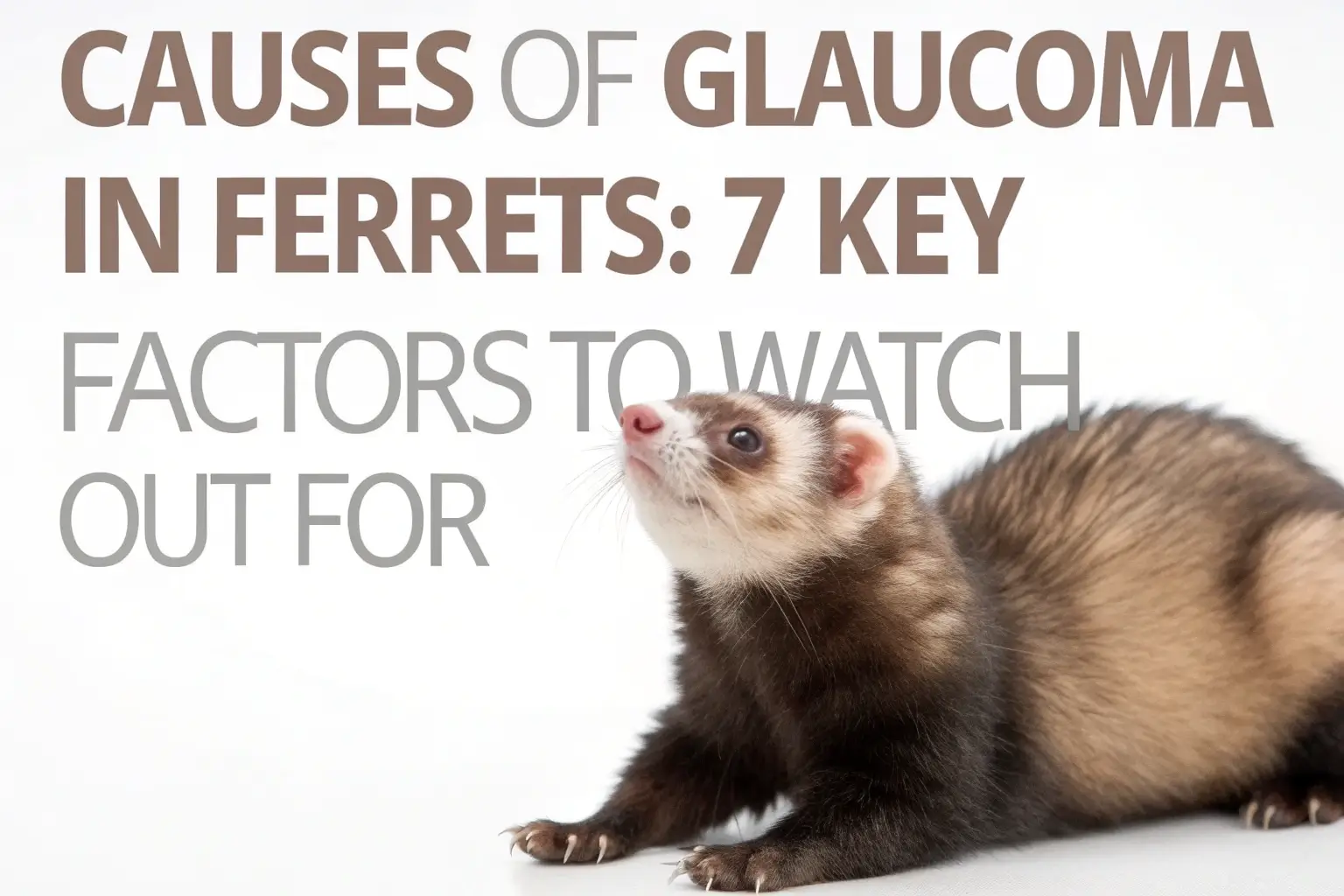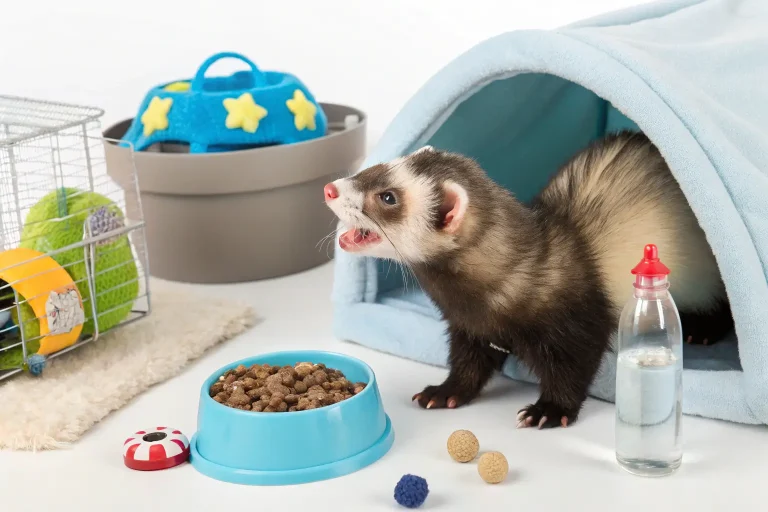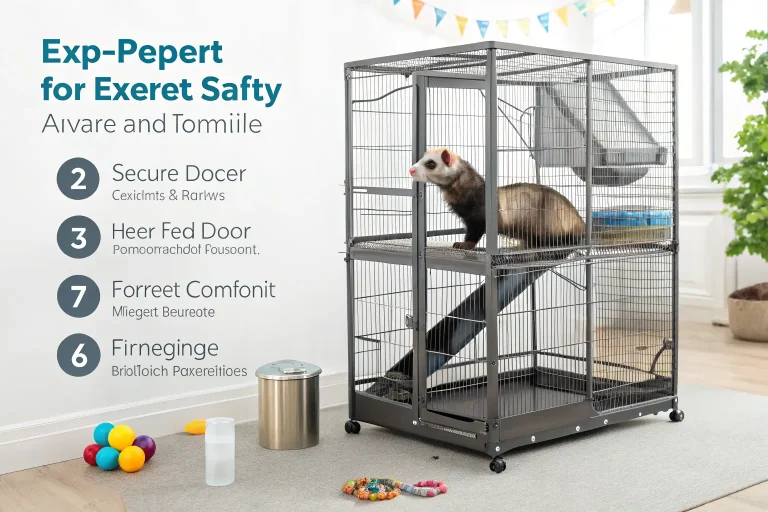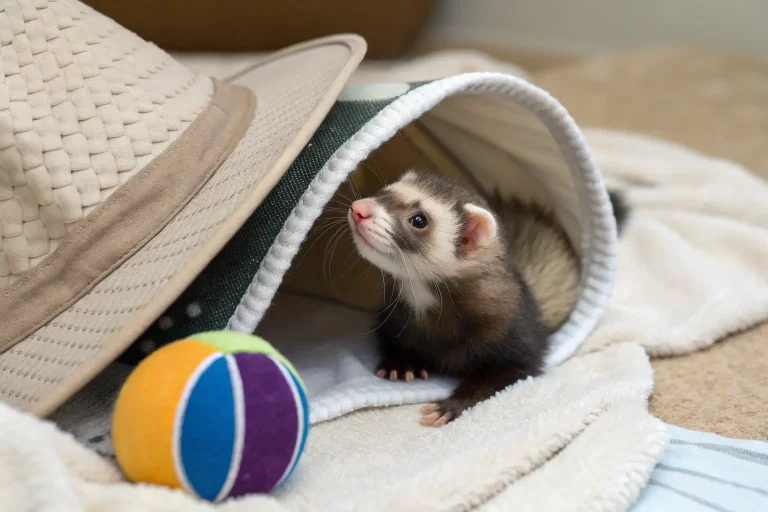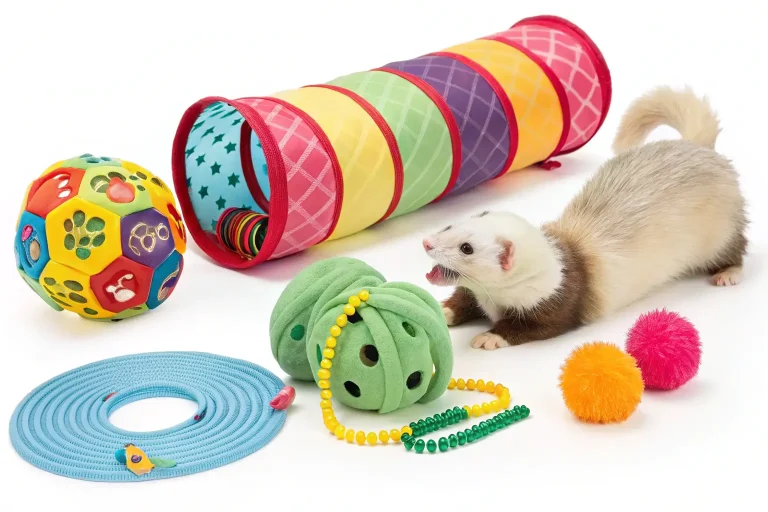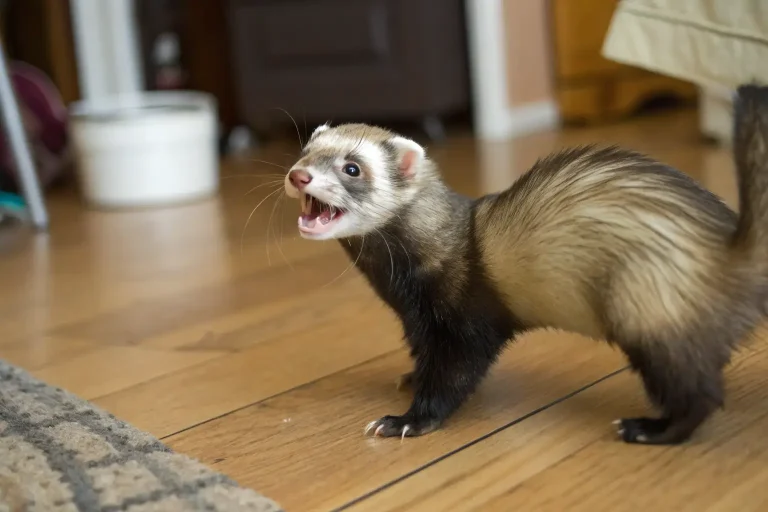Causes of Glaucoma in Ferrets: 7 Key Factors to Watch Out For
Wondering why your fuzzy friend is squinting or has watery eyes? Glaucoma in ferrets is a serious condition that requires immediate attention. Understanding the causes of glaucoma in ferrets can help you spot early warning signs and potentially save your pet’s vision. These small carnivores are susceptible to several eye conditions, with glaucoma being one of the more concerning ones due to its progressive nature and potential to cause blindness if left untreated. In this comprehensive guide, we’ll explore the most common triggers of this painful condition and provide practical advice for keeping your ferret’s eyes healthy.
Introduction
Ferrets have quickly become beloved pets in households across America, charming owners with their playful antics and curious personalities. These small, domesticated members of the Mustelidae family bring endless entertainment with their “war dance” and burrowing habits. However, their health, particularly their eye health, requires special attention.
Learning about the causes of glaucoma in ferrets isn’t just academic—it’s essential knowledge for any responsible ferret owner. This painful condition involves increased pressure within the eye (intraocular pressure) that can lead to permanent blindness if not addressed promptly.
Did you know that ferrets are actually far-sighted by nature? Their vision is adapted for hunting in dimly lit tunnels, making any impairment to their already specialized vision particularly problematic for their quality of life.
Species Overview
Scientific Name: Mustela putorius furo
Physical Characteristics: Ferrets typically weigh between 1-4 pounds, with males (hobs) being considerably larger than females (jills). They feature elongated bodies stretching 13-20 inches with short legs and a distinctive mask-like facial pattern. Their coat colors vary widely from sable (the most common) to albino, cinnamon, chocolate, and patterned variations. Their eyes are typically dark brown to black, though albinos have distinctive red or pink eyes due to the visibility of blood vessels through the unpigmented iris.
Subspecies: While there aren’t true subspecies of domestic ferrets, they are descendants of the European polecat (Mustela putorius). The black-footed ferret (Mustela nigripes) is a separate, endangered wild species native to North America that is not kept as a pet.
Habitat and Distribution
Natural Habitat: Wild ferret ancestors typically inhabit grasslands, woodlands, and rural areas. They’re natural burrowers, which explains why pet ferrets love tunnels and enclosed spaces.
Geographic Range: Domesticated ferrets have no natural geographic range as they exist almost exclusively as pets or working animals. Their wild ancestors (European polecats) are found throughout much of Europe and parts of Western Asia.
Adaptations: Ferrets have evolved with several adaptations that, ironically, can contribute to their susceptibility to glaucoma. Their slightly protruding eyes allow for better peripheral vision when hunting in tunnels, but this prominence makes them more vulnerable to injury—a leading cause of glaucoma in ferrets.
The 7 Key Causes of Glaucoma in Ferret
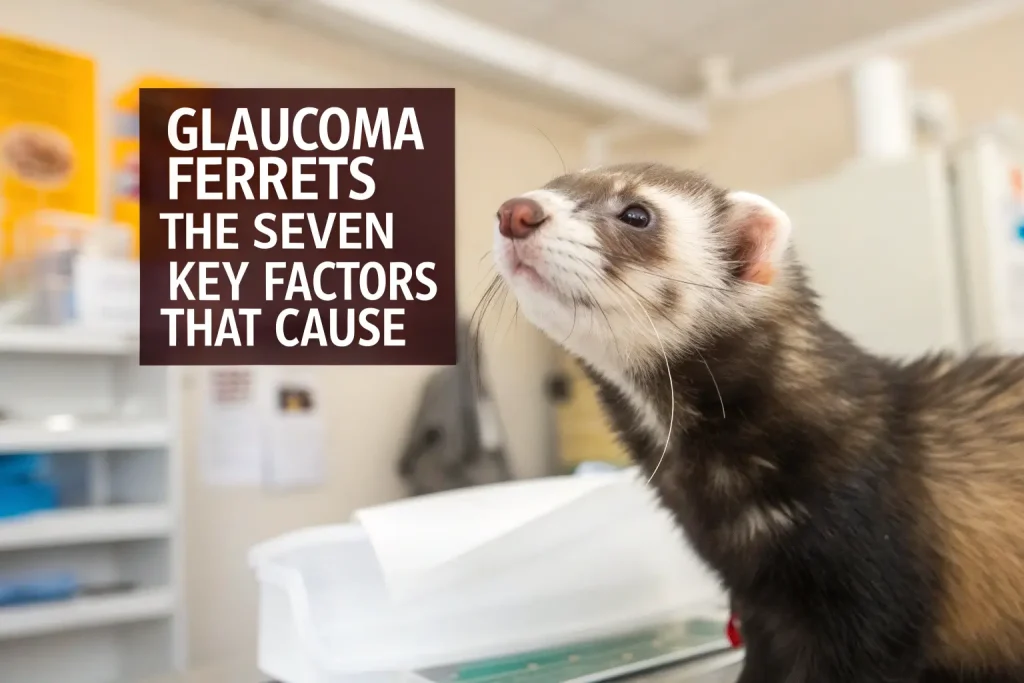
1. Genetic Predisposition
Some ferrets carry genetic factors that make them more susceptible to developing glaucoma. Though not as well-documented as in dogs or cats, hereditary glaucoma does occur in ferrets.
What to Watch For: If you notice multiple ferrets from the same bloodline developing eye issues, genetic factors may be at play. Responsible breeders should avoid breeding ferrets with known eye problems.
Prevention Tip: When adopting, ask about the eye health history of the ferret’s parents and siblings if possible.
2. Eye Injuries and Trauma
Physical injuries to a ferret’s eye represent one of the most common causes of glaucoma in ferrets. Their playful, curious nature and protruding eyes make them vulnerable to scratches, pokes, and impacts.
What to Watch For: Check for scratches, cloudiness, redness, or squinting after playtime, especially if your ferret has been wrestling with cage mates or exploring tight spaces.
Prevention Tip: Ferret-proof your home by removing sharp objects at ferret level and ensure cage accessories don’t have rough edges.
3. Secondary Infections
Bacterial and viral infections that affect the eye can lead to inflammation that blocks normal fluid drainage, resulting in increased pressure and eventually glaucoma.
What to Watch For: Discharge (clear, white, or colored), redness, pawing at the eye, or frequent blinking can indicate an infection.
Prevention Tip: Regular veterinary check-ups can catch eye infections early before they progress to more serious conditions like glaucoma.
4. Lens Luxation
This condition occurs when the lens of the eye becomes partially or completely dislocated from its normal position. It’s less common in ferrets than in some other pets but remains a potential cause of glaucoma.
What to Watch For: A visible shift in the appearance of the eye, sudden onset of pain, or a cloudy appearance to the eye.
Prevention Tip: Unfortunately, this condition is difficult to prevent, making regular veterinary examinations crucial for early detection.
5. Tumors and Growths
Intraocular tumors can interfere with normal fluid drainage and cause pressure to build up within the eye. While relatively rare, these growths represent a serious cause of glaucoma in older ferrets.
What to Watch For: Changes in eye color, shape, or size; a visible mass in or around the eye; or progressive vision problems.
Prevention Tip: Regular physical examinations can help detect growths early when treatment is most effective.
6. Age-Related Changes
As ferrets age, the structures within their eyes can undergo changes that increase the risk of developing glaucoma. Older ferrets (4+ years) are generally more susceptible.
What to Watch For: Gradually increasing cloudiness, changes in how your ferret navigates familiar spaces, or bumping into objects they previously avoided.
Prevention Tip: Consider more frequent veterinary check-ups as your ferret enters their senior years (typically around age 4).
7. Inflammatory Conditions
Conditions like uveitis (inflammation of the middle layer of the eye) can cause changes in the eye’s drainage system, leading to increased pressure and eventually glaucoma if not treated.
What to Watch For: Red, painful eyes, increased tearing, sensitivity to light, or partially closed eyelids.
Prevention Tip: Any sign of eye inflammation requires immediate veterinary attention to prevent progression to glaucoma.
Diet and Feeding Habits
What They Eat: Ferrets are obligate carnivores, requiring a diet high in animal protein and fat with minimal carbohydrates. In the wild, their ancestors consumed whole prey, including meat, organs, and bones.
Hunting Behavior: Wild ferrets are skilled hunters, using their slender bodies to pursue prey into burrows. Pet ferrets retain these hunting instincts, often “stashing” toys and food items.
Dietary Needs: Proper nutrition plays a surprising role in preventing eye conditions, including some causes of glaucoma in ferrets. A species-appropriate diet high in taurine and vitamin A supports eye health.
Connection to Eye Health: Poor nutrition, particularly diets lacking in essential amino acids like taurine, can contribute to eye problems in ferrets. Quality commercial ferret food or a properly balanced raw diet helps maintain overall health, including eye health.
Behavior and Social Structure
Social Behavior: Ferrets are highly social animals that typically live in groups called “businesses.” In domestic settings, they often form strong bonds with both ferret companions and human family members.
Communication: Ferrets communicate through a variety of vocalizations, including chirps, barks, and hisses. They also use body language, with a distinctive “dance of joy” indicating excitement and pleasure.
Mating and Reproduction: Unspayed female ferrets (jills) remain in heat until bred, which can lead to health issues including anemia. This reproductive physiology doesn’t directly cause glaucoma but underscores the importance of proper veterinary care for all aspects of ferret health.
Conservation Status
Endangerment Level: Domestic ferrets are not endangered. However, their wild cousin, the black-footed ferret (Mustela nigripes), is listed as endangered by the IUCN Red List.
Threats: While domestic ferrets face no conservation threats, they are banned as pets in some areas due to concerns about potential impacts on native wildlife if released.
Conservation Efforts: The successful captive breeding and reintroduction programs for black-footed ferrets represent one of conservation’s great success stories, bringing the species back from the brink of extinction.
Interesting Facts
Ferrets can sleep up to 18 hours per day, yet when awake, they’re incredibly active and playful.
Their poor distance vision but excellent low-light capability reflects their evolutionary history as tunnel hunters.
Ferrets have a natural ‘mask’ of darker fur around their eyes that helps reduce glare, similar to how athletes apply black grease under their eyes.
These playful pets have scent glands that produce a distinctive musky odor, which can be reduced but not eliminated through spaying/neutering.
Historically, ferrets were used for “ferreting”—hunting rabbits and rodents in fields and barns—a practice dating back to Roman times.
Tips for Preventing Glaucoma in Pet Ferrets
Regular Eye Examinations: Schedule routine veterinary check-ups that include thorough eye examinations, ideally with a veterinarian experienced with ferrets.
Proper Nutrition: Feed a high-quality, species-appropriate diet rich in animal proteins and essential fatty acids to support overall eye health.
Ferret-Proof Your Home: Remove hazards that could cause eye injuries, such as sharp objects, loose strings, or small toys with pointed edges.
Monitor Play Sessions: Supervise play between ferrets, especially when introducing new ferrets or when significant size differences exist between playmates.
Maintain Clean Living Areas: Regularly clean cages, bedding, and play areas to reduce the risk of eye infections that could lead to glaucoma.
Address Eye Problems Immediately: Don’t wait if you notice any signs of eye discomfort, redness, cloudiness, or changes in behavior that might indicate vision problems.
Know Your Ferret’s Normal: Become familiar with how your ferret’s eyes normally look so you can quickly identify changes. Take clear photos of your pet’s face and eyes when healthy for future reference.
Role in the Ecosystem
Ecological Importance: In the wild, ferret relatives play important roles as predators, helping control rodent populations. Domestic ferrets have been selectively bred for thousands of years and have no natural ecological role.
Impact of Decline: While not applicable to domestic ferrets, the near-extinction of black-footed ferrets demonstrated how the loss of a specialized predator can disrupt prairie ecosystems and allow rodent populations to increase unchecked.
Relationship Between Environment and Health: The confined environments in which pet ferrets live can sometimes contribute to stress or exposure to irritants that might indirectly impact eye health. Ensuring good ventilation and using safe cleaning products helps minimize these risks.
Conclusion
Understanding the causes of glaucoma in ferrets is crucial for early intervention and prevention. From genetic factors and injuries to infections and age-related changes, being vigilant about your ferret’s eye health can make all the difference in preserving their vision and quality of life.
Remember that ferrets are masters at hiding pain and discomfort—an evolutionary trait that would have protected them from predators in the wild. This means that by the time symptoms become obvious, eye conditions may have already progressed significantly. Trust your instincts if something seems “off” with your ferret’s eyes or behavior.
If you notice any changes in your ferret’s eyes—redness, cloudiness, squinting, excessive tearing, or behavioral changes that might indicate vision problems—seek veterinary care immediately. Early intervention is your best tool for managing and potentially reversing the causes of glaucoma in ferrets before permanent damage occurs.
As a responsible ferret owner, your attention to detail and prompt action can save your furry friend’s sight and ensure many more years of playful antics and curious exploration.
Frequently Asked Questions
How common is glaucoma in ferrets compared to other pets?
Glaucoma is less common in ferrets than in dogs and cats, but its occurrence is significant enough to warrant close monitoring. Because ferrets are so skilled at hiding discomfort, cases may be underreported as owners miss early symptoms.
What are the first signs of glaucoma that ferret owners should watch for?
Early signs include subtle changes like mild eye redness, increased tearing, squinting, cloudiness in the eye, dilated pupils, or behavioral changes such as bumping into objects or showing less interest in play. Any change in the appearance of your ferret’s eyes warrants veterinary attention.
Is glaucoma in ferrets treatable, or does it always lead to blindness?
When caught early, the underlying causes of glaucoma can often be treated, potentially preventing vision loss. However, advanced cases may result in permanent blindness despite treatment. The key is early detection and prompt veterinary care.
Should I avoid getting a ferret if glaucoma runs in my family?
There’s no connection between human genetic predisposition to glaucoma and that in ferrets. However, if you’re concerned about pet medical costs, be aware that ferrets require specialized veterinary care and may develop various health issues, including eye conditions, as they age.
How expensive is treatment for ferret glaucoma?
Treatment costs vary widely depending on the cause, severity, and your geographic location. Initial diagnosis with special eye pressure testing can range from $100-300, while medical management might cost $20-50 monthly for medications. Surgical options, if needed, can range from $500-1,500, making pet insurance worth considering for ferret owners.
Can diet affect my ferret’s risk of developing glaucoma?
While diet isn’t a direct cause of glaucoma in ferrets, proper nutrition supports overall health, including eye health. A high-quality, meat-based diet appropriate for ferrets helps maintain their immune system and may reduce inflammation throughout the body, potentially lowering risks of some secondary conditions that could lead to glaucoma.
At what age do ferrets typically develop glaucoma?
While glaucoma can affect ferrets of any age, it’s more commonly seen in middle-aged to older ferrets (3+ years). However, cases resulting from injury or infection can occur at any age, highlighting the importance of consistent monitoring throughout your pet’s life.

